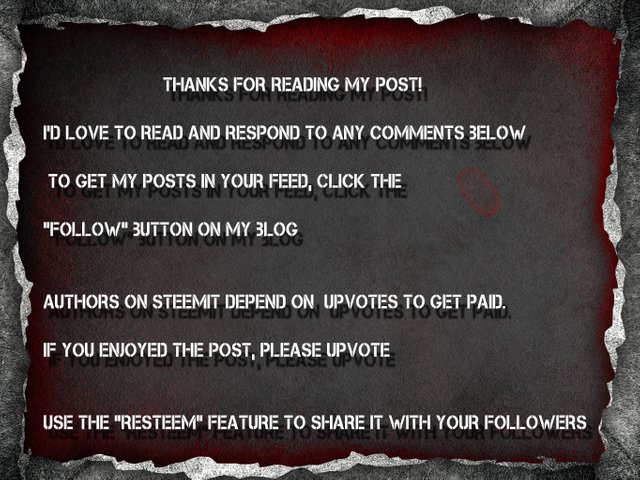Turn Your Steemit Writing into Ebooks and Make More Money, Pt 5, Putting the book together
You know what you want to write about and you have a pretty good idea that there are at least a few people out there who might like to read it. That's a great start!

Now you get to find out if you really want to be a writer. Trust me, it is not always as much fun as you would think it might be. My days are often long, and run into my nights. Some projects are fun, but have hard parts, while others are just plain hard.
This process is two parts inspiration mixed with six parts hard work and a million parts refusal to give up. Since you will not be able to keep everything you write, you need to know where you are headed. This is not a random road trip, this is a special delivery.
You need an outline and the best way to get it is to follow this program
•Collect every available bit of data, and all of your ideas into one place. Get it all out now. Empty your head, stack up the references, bookmark the sites and have it all ready.
•You need to bring some organization into this mess. This requires sorting and discarding anything that is not essential. You can always add it later if need be.
•Build an outline. This is the frame for your book, telling you exactly what you have to write from beginning to end.
•Tear it apart and separate it into sections. Each segment in your outline will represent a few paragraphs, or pages.
Compiling the Ideas

This is purely a creative process. Write it all down, it may be easiest to make this a digital record, so you can include links to sources, etc., for future reference. Separate ideas so that each can later be plugged in where it goes in your outline.
Outlining Techniques
If you know what you want to say and can write a linear outline, taking the concept from beginning to end, great, do it, you will need this eventually, if you can do it now, it will save time.
Mindmapping, Clustering, and free association are also great ways to get lots of ideas down at once. You will want to explore the connections between all of your ideas at this early stage. You may find you look at things from another angle when you understand what is connected to what.
Shoot for a goal, if you can come up with 100 things to say about your topic, that you feel confident enough to write a few pages about, you will definitely not have any problem writing your ebook.
Freestyle: Use whatever method works for you to compile your ideas. It only has to work for you, not everybody else. You are building the skeleton, no one will see this it does not have to be elegant.
Stay Focused: Don't lose sight of your original topic and research. Stay connected with these two imperatives
1.Am I answering the question or solving the problem I followed to get here? What do I know about the issue that might help me in that?
2.What is my unique solution, or what details am I offering that might have been overlooked in other sources or solutions.
Let this list, or mind map, or whatever you ended up with, sit for a bit. It could be an hour, it might be a week. Come back to it and see if it all still makes sense, or if you need to add to it.
Sort This Stuff Out!
Right now, what you have is a lot of disjointed thoughts and ideas in a document, about your topic. That is great! The more you have, the better, but now it's time to weed it out and get it nice and tidy to start making sense out of it.

Go through your list of ideas with a focus toward patterns and connected ideas. Typically a good outline will have three to five major points. Each of these will have three to five supporting points. It's easiest to work in a pattern.
For example, if you have five chapters, each chapter might have three main ideas, with each main idea having three supporting ideas. By keeping it this way, you can create a pattern that makes it simple to build each chapter so that each one goes together quicker than the last.
Prioritize Your Ideas
Write each idea as one representative sentence. Rank them from most important to least. Use your hook phrase, or title as a filter to sort these out. Keep ideas that support and provide solutions for the promise your hook makes and discard those that do not.
The goal here is to build a ladder toward your solution, which is hopefully clearly stated in your title. As you go, your ideas should be forming little clusters, or groups of similar thoughts. These will form chapters for your book.
Building Your Outline
If you didn't already do this, you'll want to create an outline. Here is the outline I used to write my book How to Develop a Creative Process
Inspiration
1: How to be an inspired person
A: Find things that you think are inspiring
B: Inspire others, live a life of possibility
C: Stay busy, ideas come to minds that use them
2: What to do with inspiration
A: don't rush it
B: take a picture
C: introduce it to a friend or two
3: How to develop your inspiration
A: don't force it, give it a framework
B: protect it in the early stages
C: when the time comes, share it!
From Inspiration to Vision
1: Capture as much as you can
A: make a record of every idea
B: try not to nail them down too hard
C: don't worry about editing
2: Explore Your Ideas
A: keep it fun and don't focus on the failures
B: follow every path as far as it goes, then forget it
C: see section one in this chapter, record everything!
3: Inventory your materials
A: put everything in one place
B: Sort out ideas that belong somewhere else, but don't discard them
C: Put things in order, but don't get attached yet
Birthing Your Vision
1: Make it your own
A: take ideas, but own your process
B: buy or create tools that work for you
C: stop comparing it to others work
2: Set some goals
A: make them challenging
B: keep them reasonable
C: celebrate milestones, but not too much
3: Keep a steady pace
A: work every day as much as possible, even a little
B: review only as needed
C: it's okay to have spurts
Metamorphosis
1: A cocoon is not a coffin
A: allow your work to change
B: be okay with it becoming separate from you
C: celebrate change, even when it hurts
2: The Long Wait
A: think ahead and prepare a game plan
B: do what you can to promote and share now
C: set a date to launch and work toward it
3: Don't Force the Exit
A: Your work needs to stand on its own
B: You could crush it at this stage
C: Celebrate the rebirth
Setting it Free
1: Remember why you did this
A: You didn't create it for your own private collection
B: give it with an open hand
C: envision the future
2: Make sure it's ready
A: don't be afraid to make last minute changes
B: learn when to stop editing
C: get outside input, but don't just "take" it
3: Giving it a New Home
A: this is not an open adoption
B: let others own it the way they want to
C: appreciate the variety of ways people view your work
I typed it into a Windows Sticky Note, so that I could have it in front of my word processor as I wrote. Not everything that is here ended up, word for word, in the book, and this is a formula that I had been using for the better part of two decades. The whole process, took me about two or three hours to outline, then the book wrote itself in about a day and a half.
In this case, I was following a process with distinct steps that I have gone through countless times. This is slightly different than a purely informational piece. Here is a typical way of presenting non-fiction information in outline form.
1.State the problem you are setting out to solve. Describe it in as much detail as you can, including why it is detrimental in the lives of your audience. Empathize. If you have selected your topic well, you should know how they feel when faced with this issue, show that.
2.Give a sneak preview of your solution. Outline it in broad terms briefly, leaving room for further explanation as the book progresses. This is a good place for case studies, or examples of people who have used the solution you provide. Briefly introduce the benefits.
3.Provide further explanation. This is where you can break out the individual parts, or steps of your system, or solution. Keep it friendly and not too preachy, like a friend teaching you something. Provide enough information that if they choose to follow your instructions, they should at least be able to learn to do whatever it is, without further instructions, on a basic level.
4.Give “continuing education” advice. Take the time to guide your audience to further resources for more advanced understanding, or things they can learn to help them better apply your solution in their own lives.
5.Explain the benefits. Now that you have solved their problem, tell them why they will enjoy your solution. Encourage them to explore your ideas, and share it with friends.
For the most part, there is one essential element to this outlining process. State the problem first. You have to convince the reader that you not only understand what it is they are trying to achieve, but that you actually have a solution. By stating the problem, before the solution, you remind them of why they need your book in the first place.
Much of the rest is really up to you. Mix and match elements to create the book that makes this most sense for your topic and your style of writing. Notice that in this book, we explored some of the issues that writers face when considering a book project, before outlining the full solution.
For this stage of development, the goal is to create your chapter headings, The number of chapters is up to you, but more than ten will make this a longer project, and may present you with a bigger challenge than you want for your firs book.
Building Your Chapters
Once you have your chapter headings, do a mini version of your idea collection for each one. Write a list, or mindmap of ideas that follow the same, problem/solution pattern you used for the overall book.
Each chapter should ideally have three to five smaller ideas within it, building up to the chapter heading much like you built up to your hook. Any chapter that cannot support at least three, like in tradition outlining, should probably become a sub-point in another chapter, rather than its own.
The Outline is Not to be Etched in Stone
This is a guide. It may well be that every point in your outline ends up in the book, but some of them might change as you write. Don't worry too much about it. Just create a structure that makes sense.
Next I'll share with you a method I use to produce books very quickly. It's designed so that you can follow it to write your first book in seven days. That, for me, is a long time on a simple ebook.

This post has been linked to from another place on Steem.
Learn more about linkback bot v0.4. Upvote if you want the bot to continue posting linkbacks for your posts. Flag if otherwise.
Built by @ontofractal
hi @markrmorrisjr, just stopped back to let you know that your post was one of my favourite reads yesterday and I've included it in my Steemit Ramble. You can read my comments about your post here. I also included the links to the other four parts so people can get maximum benefit from your great guide.
Thanks for putting this together.. I will share so I can refer to it more..